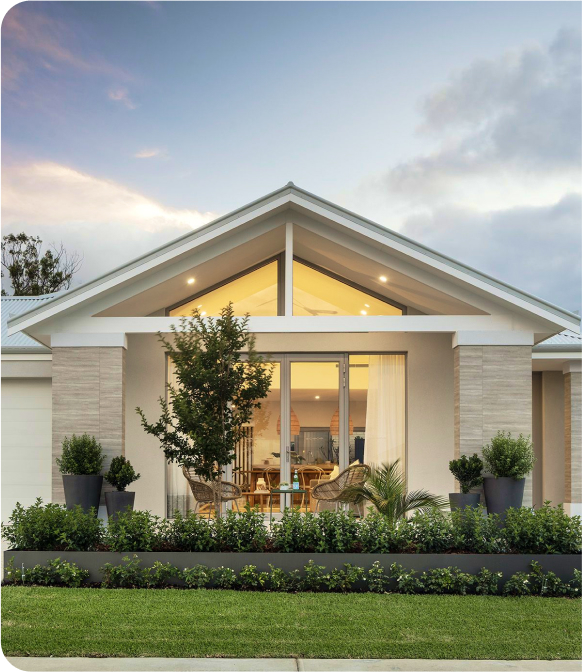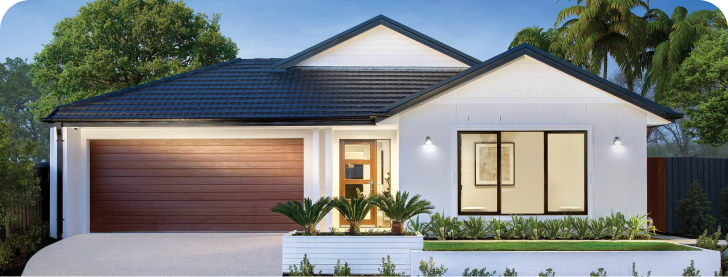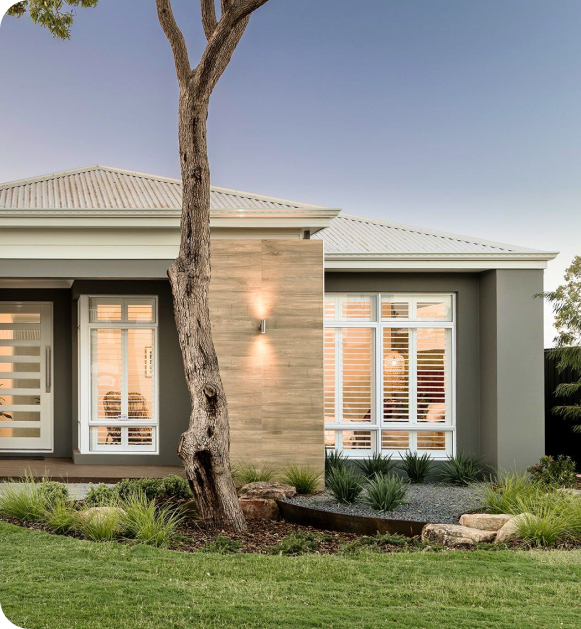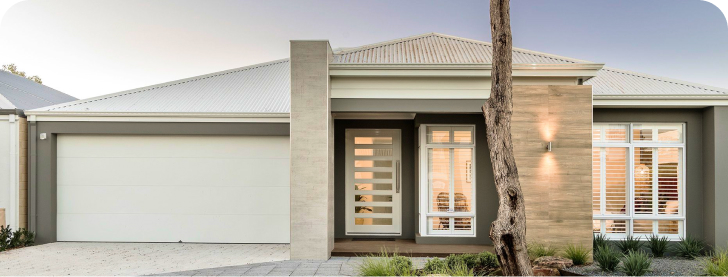
The building of accessory dwelling units, which also go by the names like granny flats or in-law units, has recently seen a significant increase in interest from homeowners all over America. For sure, it is much easier to use your lot to the fullest and build another unit there along with your main dwelling. Instead of looking for property in another part of the town, on a separate address, or even state. Moreover, versatility is also an important factor that plays in favor of an accessory dwelling unit.
Before you decide to build an ADU on your lot, it is vital that you understand all the important steps of the construction. However, in any state, there are certain building permits that have to be acquired from the local building department. Without such permits, it will be impossible to build anything in the existing space.
Read the following article if you want to find out more about zoning code standards, how to address the violations in the process, or how to decide on the final design in order to get the required permits.
The first thing we would like to start with is to give you a clear understanding of what we mean when we talk about local building codes or permits.
Building codes are developed by the responsible ministers who set up the standards for the safety of the construction and the usage of certain materials that would not cause any harm to health. They cover all the areas of the ADU design, including the foundation, electricity lines, plumbing, and ventilation. So, basically, everything you will need in your ADU is controlled by these codes. All in all, they are the same, but certain details can vary depending on the state ADU law. Moreover, you should check only for the latest codes, as they are updated constantly.
Permits, in their turn, are governmental requirements that need to be obtained if you start your ADU project. It is crucial to get the ADU permit before you start the construction if you don't want to demolish everything you have built in case of failure. They also vary depending on the location, construction value, and construction size, so keep an eye on them.
Applying for and obtaining permits is an intricate process that involves several important steps. We have prepared a step-by-step guide on what you need to do to pass the permitting process with flying colors and get your ADU project approved.
The necessary steps are the following and you should:
Next, we will take a closer look at each step. However, if you are still not sure that you will be able to get the permits and need a helping hand. It is never too late to work with professionals and hire general contractors that will acquire the documents for you at ease.
Some people say that our world has become too safe for all of us and there are no elements of surprise or a game today. However, we see it as a great achievement for us as a society. With different systems of control being introduced every year, the fear for one's life has almost become history. The following elements should help you get the building permit.
The local property regulations establish every small detail of electrical connections and plumbing elements. For example, you should consider the minimum electrical service size as well as meet the minimum per residential occupancy guidelines. As for the plumbing, there must be proper venting systems and water supply connections that correspond with the plumbing codes. Yes, we understand that it is inconvenient to follow, but it is necessary if you want to get your ADU approved.
You don't want your ADU to turn into a trap once you don't smell the gas leakage or go out while your stove is on? To solve these issues, certain safety regulations have been introduced, without which you won't be able to get the permits. The regulations include the mandatory installment of smoke detectors, heating ventilation, cooling systems, and fire safety standards.
As we have said earlier, ADUs can be used in a variety of different ways, and many property owners love using this new construction to accommodate their parents, which allows them to keep an eye on their elderly. However, according to the government code, even secondary units have to correspond to certain requirements, including slip-resistant surfaces, expandable paths of travel, or special doors. Check what you really need, and don't forget to install
You think your land is your land, and you can do anything you want with it? Well, technically, yes, but there are certain limitations. Zoning codes established by the government regulate the use of land, and such knowledge may help you understand what is influenced by them. Let's figure it out together.
The following considerations impact the permits:
Normally, your dwelling units cannot stand too close to important community elements like roads or other buildings. The government regulates the needed amount of ground between your ADU construction and the boundaries of the property, and this zoning information allows you to create new living space within the pre-approved limits.
Not only should your unit be placed relatively far from the boundaries, but it also should not exceed the possible height. This requirement can significantly influence your ADU design, so it is better to know beforehand how high it can be.
For sure, there are certain limitations concerning the size of your unit too. Normally, the square footage of your accessory dwelling units cannot exceed the size of the primary dwelling unit located on the same lot. To get the required permits, check the limitations for the backyard cottages concerning square feet on the site of your government.
By carefully following the requirements set by your local people in charge, you will be able to pass the final inspection and get the necessary mechanical permits.

Following the codes is one thing, but addressing the violations that may occur in the process is another moment. If these violations are not fixed as fast as possible, it may lead to the impossibility of getting the necessary building permit. But how to deal with this issue?
The first thing you have to do is identify the violations. It may require some additional resources to hire a professional inspector, but in the end, you will receive a complete list of all violations that may hinder the reception of ADU permits.
Next, you will have to develop and bring to life the action plan. Figuring out how to fix this or that issue is quite a challenge. Not only should you decide what measures to take to mitigate the issues, but you should also work out the time needed for this in order not to ruin the whole construction process.
After this, you can fix the issues found. Remember to get additional permits that will allow you to introduce the changes on the lot. Having finished the process, invite the inspector that would verify the completion of the works.
Energy-efficient appliances and approaches have become standard in modern ADUs. Even though they require the investment of some money, they allow you to economize a bit on the amenities every month. Moreover, you can contribute to the fight against environmental pollution and reduce emissions. But how to comply with energy-efficient standards while you bring to life your ADU plan?
Well, it is pretty simple – follow the energy efficiency codes. Here you can find the info on lighting (LED and fluorescent options are preferable), insulation (the quality must be on point to prevent heat loss), energy-efficient design (light-colored roof or solar panels), and much more. So to say, everything your new ADU will need.
A nasty part of every unit is working with inspectors to get their ADU permit to build an ADU according to your ADU plans. The following steps are crucial to getting this vital item:
Living in a historical place seems fun but imposes certain restrictions. Here it may take a bit more effort to get the ADU permit.
You can prepare for this confrontation and check the ADU permit records in order to get knowledge on your area and think of the arguments. Also, the inspectors or other people in charge should understand from your plot plan that your future ADU will contribute to community innovation and not deterioration. Every historic zone is different, and it is important to fit in when necessary, which may influence the final design of your ADU.
On the contrary, while building in accordance with the surroundings, it may become almost impossible to get a building permit. What if your ADU destroys the look of the historical property? Or cause harm to the fauna and flora? These are the questions that need to be considered.
Who of us likes the sound of excavators working when we are trying to go to sleep? Yes, no one, and probably your neighbors won't be happy to hear that too. Moreover, leaving the rubbish all over the building site may lead to it being spread all over the area, which is also not great. But how to fight it? Let's figure it out.
The problems with noise and pollution may be addressed in the following way:
Normally, in every area, there are certain noise ordinances that let people determine when they can make noise or not. They definitely exist in your area too, so it may be reasonable to call the local authority and find out when you can start digging and installing the roof or not.
Authorities usually approve and support the usage of materials that are energy-efficient and don't pollute the environment. If, during the construction, they find out that the air quality has changed in your area or excessive rubbish hinders access to public domains, your ADU permit will be withdrawn.
Yes, getting ADU permits is hard, but not following the requirements may lead to serious consequences, including the impossibility of finishing your single-family dwelling or costly penalties. We are that you definitely don't want to lose a few hundred dollars and would likely follow the requirements of the building permit instead.
Not following the conditions on which you were given ADU permits when, for example, your real square footage doesn't correspond with real square feet can lead to the rework of your property.
Moreover, in case of serious injuries, the workers who build ADU's may have serious liabilities. Not only will the ADU permit be called off, but also you will pay serious compensation or answer in court.
Licensed contractors underline many ways you can use your unit. It can serve as a single-family dwelling unit for your kids or become a habitable space for your parents or grandparents. Moreover, it can accommodate one or more people, like your friends that decided to stay overnight. Finding dwellers is also easy, as no serious documents like an easement permit are required.
Junior accessory dwelling units stay among the favorite picks of our customers. Not only do they need easier permit review, but they also require fewer construction loans and serve as a great single-family residence. Also, many homeowners like to order the remodeling of an existing ADU or garage conversions as one of the most affordable ways to organize living space.
Every ADU is different, and there are many elements that may influence the amount of time needed to build an ADU. But on average, from the time when they address the assignment request, and you get an ADU permit to the moment when you will be able to live there will pass 6–8 months.











